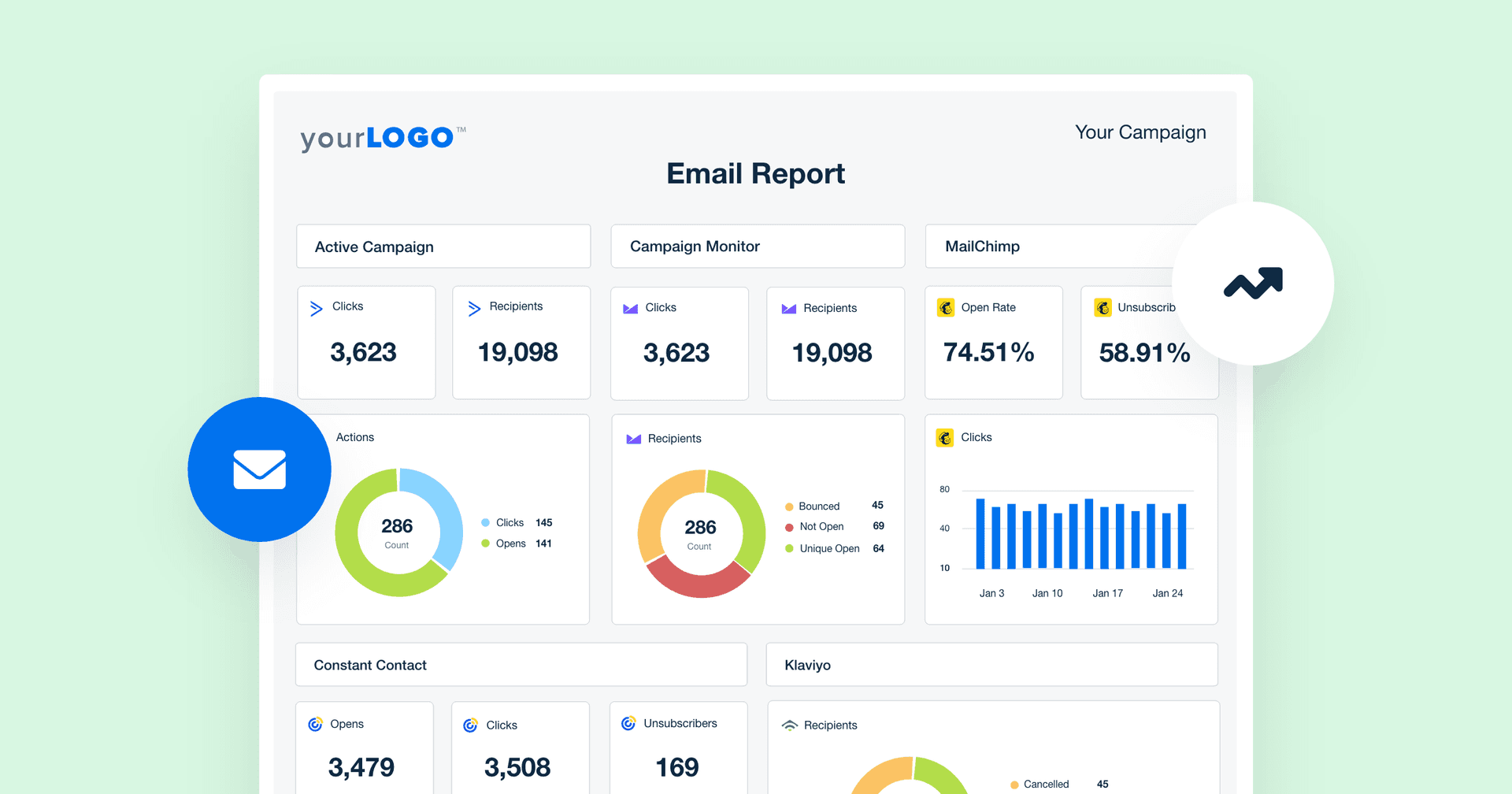Table of Contents
Table of Contents
- What Is ConvertKit?
- Top 4 ConvertKit Features Agencies Love
- Top 10 ConvertKit Analytics To Track for Clients
- Turning Raw ConvertKit Metrics Data Into Actionable Insights
- How To Create ConvertKit Reports Using AgencyAnalytics
- 5 ConvertKit Reporting Tips
- ConvertKit Analytics vs. AgencyAnalytics
- Summary and Key Takeaways
7,000+ agencies have ditched manual reports. You can too.
Free 14-Day TrialQUICK SUMMARY:
ConvertKit analytics provide important insights for tracking the performance of email marketing campaigns, including metrics like subscriber growth and engagement. This article details the top ConvertKit analytics agencies should be tracking. We also explore how AgencyAnalytics enhances reporting by integrating ConvertKit with PPC, SEO, and other metrics, delivering comprehensive, branded reports that streamline client communication and improve campaign success.
As an email or PPC marketer, you’ve probably faced the challenge of explaining campaign performance to clients who may not fully understand the metrics you’re showing them.
You’re running the campaigns, and tracking the numbers, but how do you clearly communicate which results really matter?
If you’ve ever tried to explain an open rate or click-through rate to a client who just wants to know, “Did we get more leads?”—you’re not alone.
When it comes to ConvertKit, marketers like to track many different data points, but some are more important than others. Focusing on the top metrics helps you simplify reports and focus on what really moves the needle for your clients.
In this article, we’ll break down the top 10 ConvertKit analytics to track, helping you cut through the noise and provide insights your clients will understand and appreciate.
Whether you're tracking new subscribers or clicks, these metrics will help you show the real impact of your agency’s email campaigns.
What Is ConvertKit?

ConvertKit is an email marketing platform designed specifically for content creators, bloggers, and small businesses.
It helps users manage and grow their email lists, create personalized email sequences, build custom landing pages, and build targeted marketing funnels, making it an important tool for engaging and converting customers.
It has automation features, broadcast reporting, and detailed customer segmentation, helping marketers measure the success of their campaigns and improve performance.
Top 4 ConvertKit Features Agencies Love
Marketing agencies like having an efficient email marketing tool like ConvertKit for many reasons. We’ve narrowed it down to these four:
1. Building an Effective Marketing Funnel
ConvertKit’s automation features help agencies guide their clients’ customers through a well-structured marketing funnel, from landing page to lead generation to conversion.
This is particularly important for creators and small businesses that rely on lead nurturing strategies. The ability to automate emails based on customer actions and behavior helps create a more personalized and efficient marketing funnel.
Read More: Top 11 Marketing Agency Automation Processes To Save Time and Boost Efficiency
2. Measuring Campaign Performance
The success of any marketing strategy depends on its ability to be measured and optimized over time. ConvertKit’s analytics and reporting tools include broadcast reporting, allowing marketers to track campaign performance in real-time. Whether your agency is running paid ads to build an email list or testing different subject lines, ConvertKit provides metrics to help make more informed decisions.
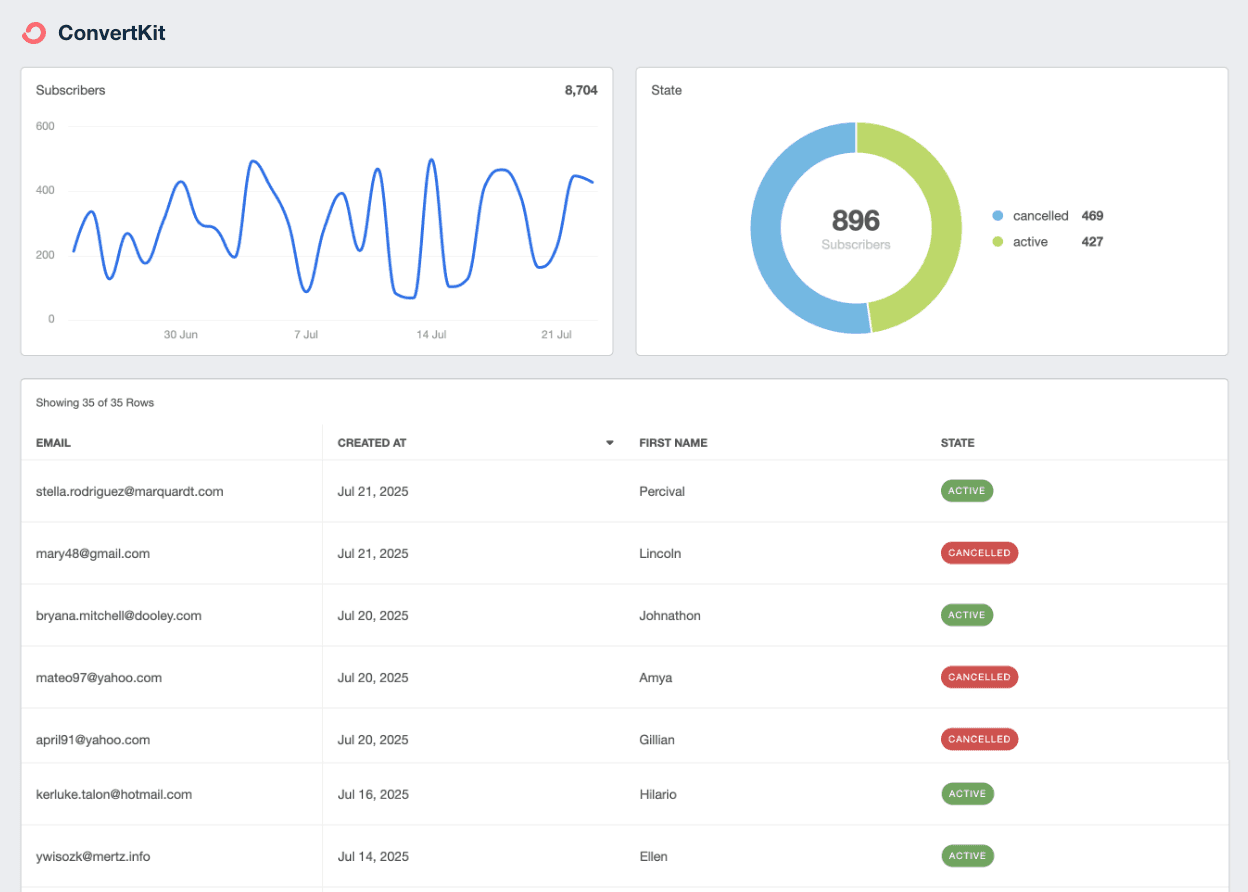
Connect ConvertKit metrics to a client’s entire marketing campaign in a single dashboard. AgencyAnalytics has over 80 integrations that keep marketers and their clients updated in real-time. Get started with your 14-day free trial.
3. Enhancing Customer Engagement
Personalized communication is key to maintaining customer loyalty. ConvertKit helps marketers categorize specific segments for their client’s audience based on behaviors, preferences, and actions. This segmentation ensures that subscribers receive relevant content, whether it’s part of an automated sequence or a one-time broadcast.
Agency Tip: When customers feel that content is tailored to their needs, they are more likely to engage with the brand and take the desired actions.
4. Cost-Effective for New Agencies and Creators
Running large-scale paid ads campaigns can be costly for budding agencies and creators. ConvertKit offers an affordable way to grow and engage an audience through email marketing. Focusing on building a strong email list and nurturing relationships helps drive sales and conversions without needing to invest heavily in other forms of advertising.
Read More: How To Ask a Client To Increase Their PPC Budget
Top 10 ConvertKit Analytics To Track for Clients
Tracking the right metrics in ConvertKit is key for evaluating the effectiveness of your agency’s email marketing campaigns. For clients, understanding how these metrics influence overall performance allows for more informed decisions, helping to optimize email content, engagement strategies, and overall marketing funnels. Below are the top 10 metrics in ConvertKit that every agency should monitor to maximize their email marketing efforts.
1. Average Click Rate
The average email click-through rate measures the percentage of recipients who clicked on at least one link in an email campaign. This is one of the most important metrics as it provides insight into how engaging your email content is and whether the call-to-action (CTA) is compelling enough to drive further engagement. A higher click rate means that subscribers are opening emails and also taking action, which is a key goal in most clients’ marketing campaigns.
2. Average Open Rate
The average email open rate tracks the percentage of recipients who open the emails. This metric is key because it shows how well the subject lines and sender name resonate with the audience. A high open rate means that the emails are being noticed in crowded inboxes, while a low open rate suggests the subject lines or targeting may need refinement. Optimizing this metric often leads to higher engagement throughout your client’s campaigns.
3. Average Recipients
Average recipients refer to the average number of people who receive your client’s email campaigns. This metric helps gauge the size of the audience that consistently engages with the emails. Monitoring this metric helps assess the growth or depletion of the email list over time, and it’s a useful indicator when evaluating the effectiveness of your agency’s lead generation strategies.
4. Average Total Clicks
Average total clicks represent the average number of times all links in an email were clicked. This metric gives a broader view of engagement than the average click rate alone, as it accounts for the total volume of interaction, not just unique clicks. Tracking this metric helps clients understand how many actions their emails are prompting on a regular basis, which is particularly useful for campaigns with multiple links or calls to action.
5. Average Unsubscribes
The average email unsubscribe rate measures the average number of people who unsubscribe from your client’s list after receiving an email. A high unsubscribe rate often signals that the content isn’t resonating with the audience or that you're sending emails too frequently. Tracking this metric helps clients maintain a healthy email list by identifying when and why subscribers are opting out.
Read More: When & How Often to Email Your List
6. Count
The count metric refers to the number of times a specific event or action occurs in a client’s campaigns, such as how often an email was opened or clicked. This helps clients measure overall engagement and assess trends across multiple campaigns. Understanding the count for key events guides adjustments to content, design, and frequency to improve performance.
7. Date
The date metric logs the exact time and date that emails are sent, opened, or clicked. This is particularly important for clients looking to optimize the timing of their campaigns. Sending emails at the right time has the power to significantly improve open and click rates. Analyzing performance by date also helps in spotting trends such as which days or times of the week yield the highest engagement.
8. Sum Total Clicks
Sum total clicks aggregates the total number of clicks across all links in a single email campaign. This metric is a cumulative measure of how engaging the email content is as a whole. It is especially important for clients who want to gauge the overall success of a multi-link email, such as newsletters or promotions with several calls-to-action.
9. Total Recipients
Total recipients refers to the total number of subscribers who were sent a particular email. Unlike average recipients, which shows the average over multiple campaigns, total recipients tracks the size of the audience for a specific email broadcast. This is a key metric for clients to measure the reach of individual campaigns and compare how different emails perform across varying list sizes.
10. Total Unsubscribes
Total unsubscribes is the total number of people who opted out from the email list after receiving a specific email. This metric helps marketers understand how individual emails impact subscriber retention. High total unsubscribe numbers from a single campaign may indicate that the content or frequency was off-putting, while a low number suggests the email strategy is on the right track.
Turning Raw ConvertKit Metrics Data Into Actionable Insights
Presenting raw ConvertKit numbers to clients doesn’t tell the whole story. To truly communicate the value of ConvertKit analytics, agencies must turn these numbers into actionable insights that drive meaningful results.
Whether you’re a product marketing manager or client, these insights lead to better decision-making, optimization of the customer journey, and ultimately, higher conversions from emails generated.
Here are some tips on how to transform raw data into insights that will guide your client's marketing strategy:
Set Clear Goals & KPIs: Before diving into analytics, it’s important to define clear goals and key performance indicators (KPIs). Establishing benchmarks helps measure success and track progress over time. Without clear goals, it’s difficult to determine if the numbers are meaningful or not.
Identify Key Metrics: Not all metrics are equally important for every client. Identify the most relevant metrics that align with the client’s specific objectives. Focusing on the right metrics ensures that you’re analyzing data that will directly impact their goals, whether that’s list growth or optimizing their sales dashboard performance.
Analyze Trends: Look beyond individual campaign performance to identify longer-term trends. Analyze how key metrics like avg open rate or total clicks fluctuate over time, and determine what factors contribute to spikes or dips.
Benchmark Against Competitors: Comparing your client’s performance to industry standards or competitors often reveals areas for improvement. For example, if your client’s click rates are lower than the average in their niche, it may suggest their email content or design needs some adjusting. This external benchmarking provides context and shows clients how they measure up within their industry.
Connect the Dots With Other Platforms: ConvertKit analytics should not exist in a silo. To provide a comprehensive look at marketing performance, integrate ConvertKit data with other platforms such as Google Analytics, social media analytics, or ecommerce sites. This multi-platform approach allows you to track the complete customer journey and see how email engagement affects sales, web traffic, or lead generation.
Email often is about driving traffic to other brand destinations. You may promote content or products on your website or social profiles for example. As such, having email metrics integrated into other metrics such as your website are hugely helpful. Using UTM codes in your links is a helpful way to make a connection between emails and other target destinations.
Seth Giammanco, Principal, Strategy and Technology, Minds On Design Lab
Use Insights To Drive Strategy: Finally, take the insights gained from analyzing ConvertKit data and use them to refine and optimize your client’s marketing strategy. For example, if emails with a particular subject line format have higher average open rates, consider adopting that approach across future campaigns. The goal is to turn analytics into actionable steps that improve performance and help clients reach their KPIs.
How To Create ConvertKit Reports Using AgencyAnalytics
If you’re already using ConvertKit for your clients, connecting it to the AgencyAnalytics platform streamlines tracking important email marketing KPIs from a centralized location. With customizable dashboards, agencies (and their clients) are able to monitor everything with up-to-date data in real time.
By connecting other popular email analytics or CRM integrations like Hubspot, Mailchimp, and Klaviyo, agencies easily pair this data with PPC channels such as Google Ads, providing an in-depth understanding of where their clients' leads are coming from and how campaigns are performing.
So, where do you begin?
Start by logging into your AgencyAnalytics account and navigate to the client account you’d like to build a ConvertKit analytics dashboard for. Then select “add” in the drop-down menu to create a new dashboard.
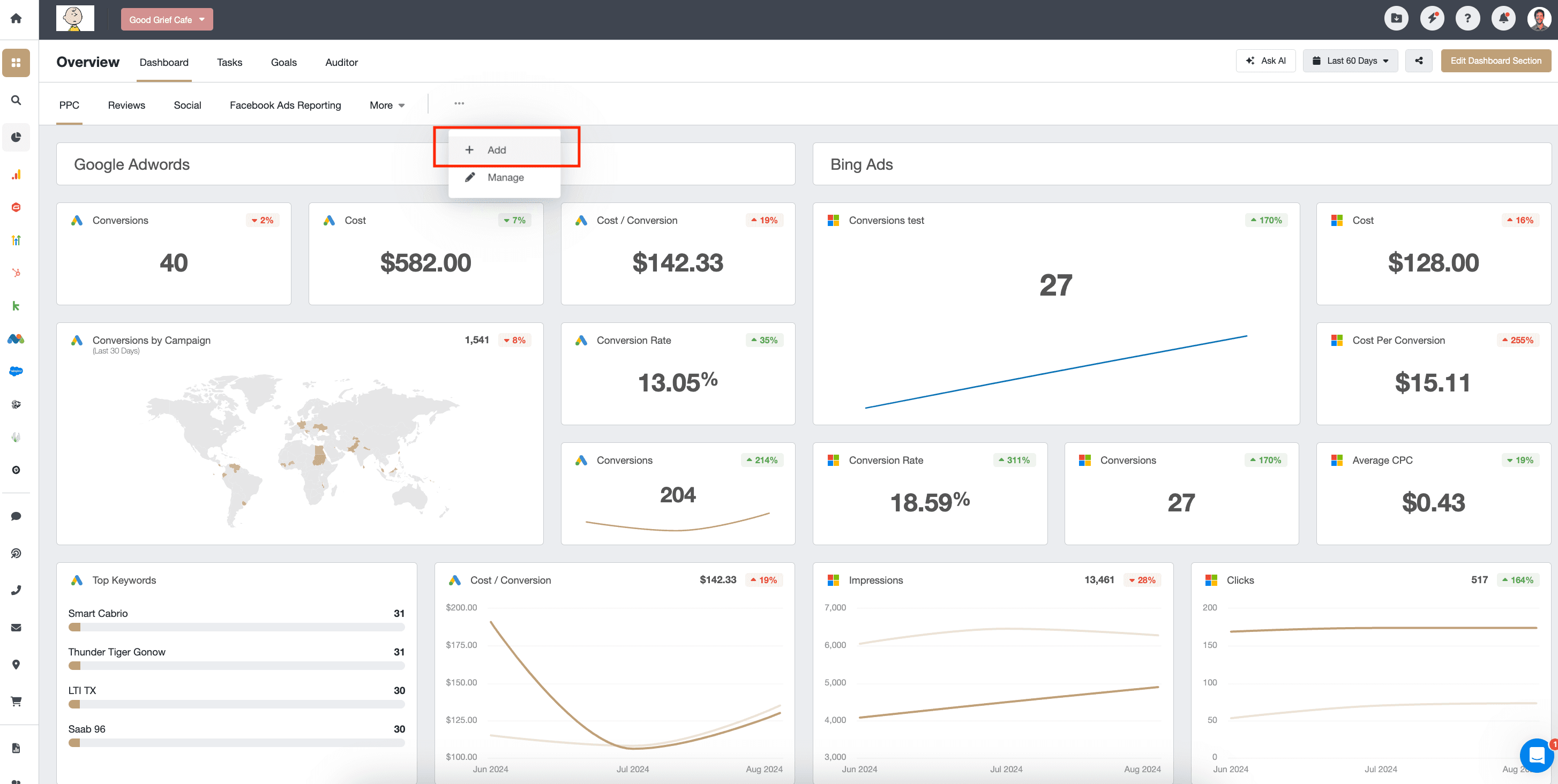
Next, you’ll be prompted to choose how you’d like to create the insights dashboard:
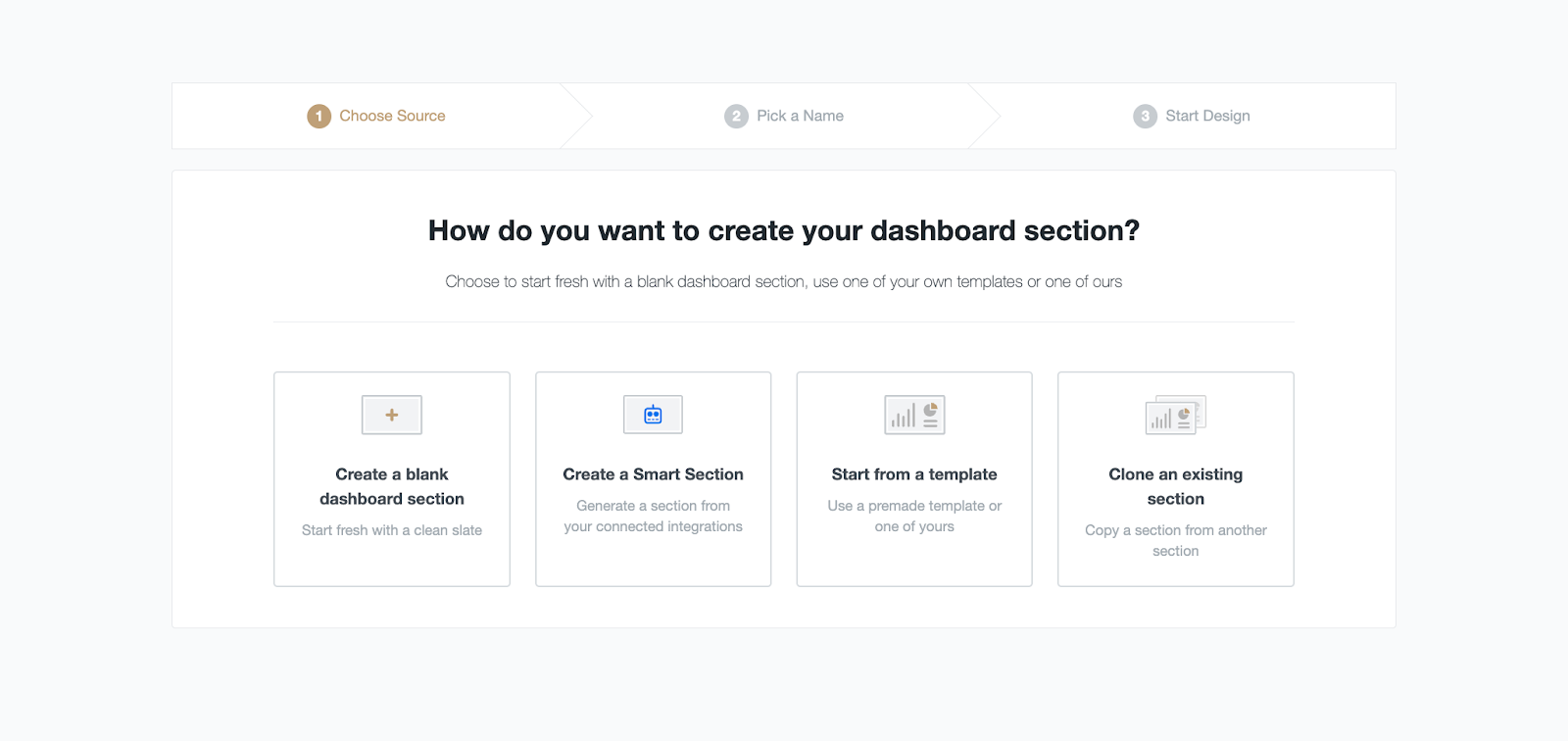
We’ve chosen to create a blank dashboard for this example. This allows you to drag and drop specific widgets you’d like from a variety of marketing platforms.

Under a time crunch? The Smart Reports and Smart Dashboards feature from AgencyAnalytics builds exactly what you need in 11 seconds or less. Try it out for yourself with a 14-day free trial.
With access to over 80 marketing channels, AgencyAnalytics gives agencies a complete picture of a client's marketing activity in one place. The platform’s user-friendly interface makes it easy to visualize data, identify trends, and make informed decisions, all while keeping clients in the loop with real-time insights.
Prior to AgencyAnalytics, client reporting was a manual nightmare. Our solution to client reporting was a combination of spreadsheets, email reports, and Google Analytics PDFs. Spreadsheets were a more consumable form of reporting for our clients, but they took enormous amounts of time. We needed a reporting format that was visually appealing, easy to integrate and accessible to our clients 24/7. That’s when we found AgencyAnalytics.
Adam Allen, CEO, LeaseMyMarketing
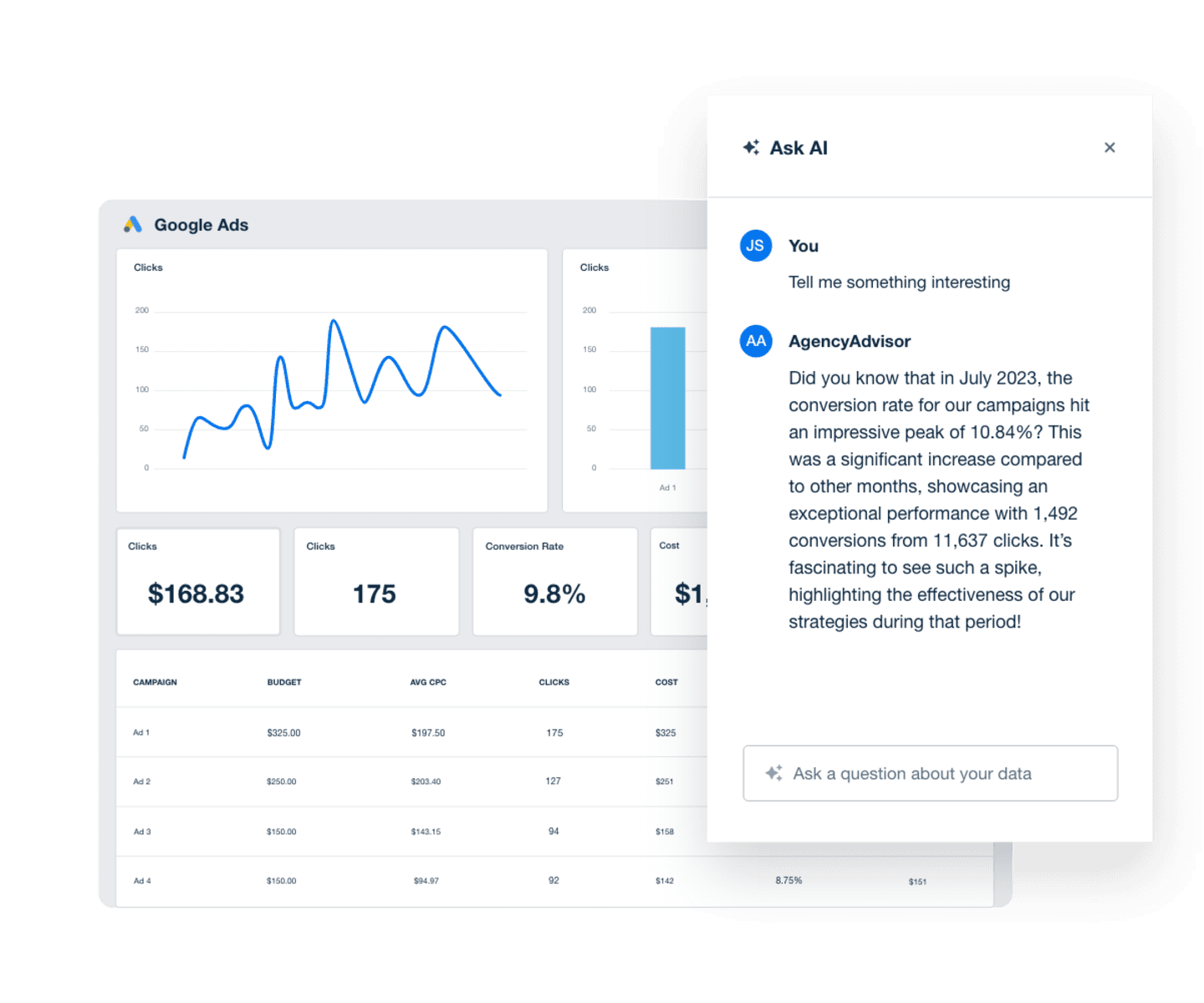
Highlight the most important aspects of your clients’ email performance in an easy-to-read report using Ask AI. This feature summarizes important findings and showcases your agency’s value front and center. Try it out with your 14-day free trial of AgencyAnalytics.
5 ConvertKit Reporting Tips
When creating an email marketing analytics report for clients, the goal is to craft something that presents the raw numbers but also tells a story about progress, success, and future opportunities.
Here are five tips to create ConvertKit reports that will truly impress your clients:
1. Combine ConvertKit With Other Campaign Metrics: Clients want to see how their email marketing integrates with other parts of their business. By combining ConvertKit data with other platform metrics—like Google Analytics, Google Ads, Facebook Ads, SEO rankings, and even sales data from their acquisition dashboard—you give clients a comprehensive look at how email marketing contributes to their overall strategy. This cross-channel analysis helps them see how email campaigns lead to traffic, conversion rates, and the acquisition of their best customers.
Collecting critical data all in one spot is amazing and has bought us time back. Tracking SEO, PPC, Social Media, and email marketing campaigns can be time-consuming, which is why having a template and dashboard that efficiently does it all is a game changer.
Justin Hual, Co Founder + COO, HIP Creative
2. Track the Right ConvertKit Metrics: Not every metric is worth tracking, especially when your clients have specific goals. Whether they want to drive the most sales, boost engagement, or grow their subscriber base, focus on the ConvertKit metrics that make the biggest impact. For example, if the client is focused on conversions, prioritize metrics like total recipients, average click rate, and average open rate to show how emails contribute to their bottom line.
3. Focus on the Results That Matter: Highlight how ConvertKit emails are impacting a client’s bottom line by focusing on the key outcomes—such as how much web traffic emails generate or which campaigns drove the most sales or engagement. Use metrics like total clicks, new subscriber growth, and lead generation to show how campaigns are moving the needle. Drawing attention to the results that matter most to your clients helps them see the value of email marketing vs. social media, for example, as a strategic tool in their overall marketing efforts.
4. Use Automated Reporting Tools: Creating reports manually is time-consuming, especially when managing multiple clients. Automated reporting tools allow marketers to easily pull data from ConvertKit and other platforms like Google Analytics and your client’s acquisition dashboard.
5. Wrap Results in Your Agency’s Brand: Use custom templates with white label features that include your agency’s logo, fonts, and colors to wrap the results in your agency’s brand. Branded reports look more professional and reinforce the value of your agency’s work.
ConvertKit Analytics vs. AgencyAnalytics
While ConvertKit's native analytics platform provides essential insights into your clients’ email campaigns, marketing agencies managing multiple platforms (and clients) need more advanced reporting capabilities.
AgencyAnalytics offers a comprehensive solution that goes beyond ConvertKit's native tools, helping agencies track performance across 80+ marketing channels and customize reports in ways that are tailored to client needs.
Feature | ConvertKit Native Analytics Tool | AgencyAnalytics |
|---|---|---|
Direct Integration | Easily access ConvertKit analytics. No extra setup is required. | Connect in seconds using the ConvertKit integration. |
Use Cases | Works for all ConvertKit users. | Built specifically for marketing agencies managing multiple clients. |
Cost | Included with ConvertKit, no additional charge. | Included with every AgencyAnalytics plan. |
Multi-Platform | Focused solely on ConvertKit analytics. | Consolidates data from over 80 marketing platforms. |
User Interface | Simplified and specific to ConvertKit data. | More customizable using widgets, custom metrics, and the drag-and-drop editor. |
Reporting | Standard ConvertKit reporting tools with limited customization. | Advanced report customization, including complete white labeling capabilities. |
Client Management | No built-in client management or report sharing tools. | Features like client dashboards, report templates, and custom access for staff and clients. |
Summary and Key Takeaways
Improving your ConvertKit reporting helps provide deeper insights and drive more impactful results for your clients. Here are a few action steps to keep in mind going forward:
Evaluate Your Current ConvertKit Analytics Approach: Assess how effectively your current engagement dashboard tracks key metrics, like new subscribers and click rates, to find areas for optimization.
Explore Third-Party Tools: Look into platforms like AgencyAnalytics to consolidate data from four dashboards or more, including ConvertKit, and 80+ other marketing channels, for comprehensive insights dashboards that clients love.
Customize Reports: Tailor ConvertKit reports to highlight each client's specific goals, like attracting more subscribers, and add your agency’s branding for a professional presentation.
Set Up Automated Reporting: Schedule automated marketing reports using tools like AgencyAnalytics to keep clients updated on new subscribers and overall performance, without the manual hassle.
Implementing these steps will help you create more insightful, streamlined reports that enhance client satisfaction and showcase the value of your campaigns.
Need help getting started? Check out our guide to connecting ConvertKit here.

Written by
Richelle Peace is a writer with a degree in Journalism who focuses on web content, blog posts, and social media. She enjoys learning about different topics and sharing that knowledge with others. When she isn’t writing, Richelle spends time teaching yoga, where she combines mindfulness, movement, and her passion for wellness.
Read more posts by Richelle PeaceSee how 7,000+ marketing agencies help clients win
Free 14-day trial. No credit card required.






